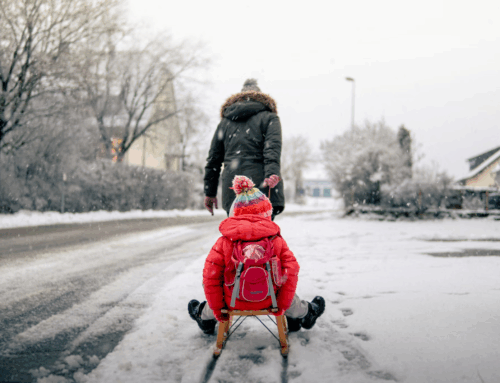
Deep beneath Katmai National Park and Preserve, the restless movement of magma and gas generates low frequency tremors—subtle seismic hums that slip beneath the range of human hearing. Above ground, Katmai’s three-million acres of roadless wilderness echo the roaring and splashing of five species of Pacific salmon, the grunts and calls of brown bears foraging and fighting for fish, the howling of coastal gray wolves, and the calving of glaciers. Located on the Alaskan peninsula just north of Kodiak Island, Katmai is a wilderness teeming with life—and once a year, it hosts a celebration that brings a spotlight to some of its most iconic (and well-fed) residents: really, really fat bears.
Fat Bear Week, occurring annually in late September, is a celebration tracking the progression of Katmai’s brown bears after a summer spent feasting and fattening in preparation for the fast-approaching winter. The feature attraction of this celebration is the single-elimination tournament wherein voters decide which of the fat bears deserves to be crowned the chunky champion of Fat Bear Week.
With the Alaskan summer officially at a close and temperatures quickly dropping, the bears of Katmai make their last efforts to gain weight before entering torpor for the winter. Since mid-August, these bears have been experiencing hyperphagia, an intense preparation phase during which they can spend up to twenty hours a day foraging and eating. During this time, bears can eat as many as 20,000 calories a day, and can gain several hundred pounds in just a few months[1].
The fat increase is critical, as it becomes their main source of energy during torpor. Torpor, similar to hibernation in other species, entails the dramatic drop of metabolic rate, allowing bears’ fat stores to last months. Their breathing and heart rate will slow, sometimes to as little as one breath every forty-five seconds and just a few heartbeats per minute. This state will allow bears to survive the barren winters, and when the snowmelt trickles through volcanic grooves and the first birdsong reaches our sleeping furry friends, Katmai’s bears will begin to reverse these processes, slowly rejoining the land of the living[1].
Although getting fat enough to survive winter torpor is the goal, the success of Katmai National Park’s brown bears can be measured in many ways. How did the bears overcome the challenges they faced that summer? How might their hard work lead to their success next year? How big did they really get?[2] When the 2025 finale vote closed on the last day of September, Bear 32, nicknamed “Chunk,” who had captured the public’s hearts after overcoming a broken jaw, was crowned the winner of this year’s Fat Bear Week with more than ninety-seven thousand votes.
But while Chunk walked away with the crown, another kind of winner emerged this season: curious students. Across the country, educators used Fat Bear Week as a tool for creating engaging lessons on ecology, data, and even democracy, and while the world celebrates this year’s Chunky Champion, educators are wrapping up their Fat Bear Week fervor. With support from the National Park Service[3], Fat Bear Week has become a creative launchpad for lessons on healthy ecosystems, keystone species, human impacts on the environment, and the intricate relationship between salmon and bears. Some educators stretched it even further: integrating math through graphing the bears’ weights, reinforcing science through salmon life cycles and bear scat analysis, and even exploring democratic processes with campaign posters for students’ favorite bears[4].
Fat Bear Week not only serves as an incredible reminder of the intricately complex ecological processes unfolding in the natural world, but also of the indomitable silliness of the human spirit. Educators enthusiastically used these salmon-stuffed bears in their classrooms to teach students about life cycles, behavior, math, and even the political intricacies of campaigning. Others have chosen to use these fat bears to impart the importance of conservation and wildlife protection. Regardless of how fat bears were incorporated into the lesson plan, educators demonstrated their incredible flexibility, creativity, and enthusiasm for teaching during this year’s Fat Bear Week—a powerful reminder that education, like nature, thrives when we embrace curiosity and joy.
[1] https://www.lionstigersandbears.org/bear-hibernation-the-science-behind-their-long-winter-sleep/
[2] https://www.lionstigersandbears.org/bear-hibernation
[3] https://explore.org/fat-bear-week
[4] https://www.nps.gov/katm/learn/education/fat-bear-week-in-the-classroom.htm
[5] https://thriftyinthirdgrade.com/educational-activities-brooks-falls-bears-fat-bear-week/
Photo by John Thomas on Unsplash




